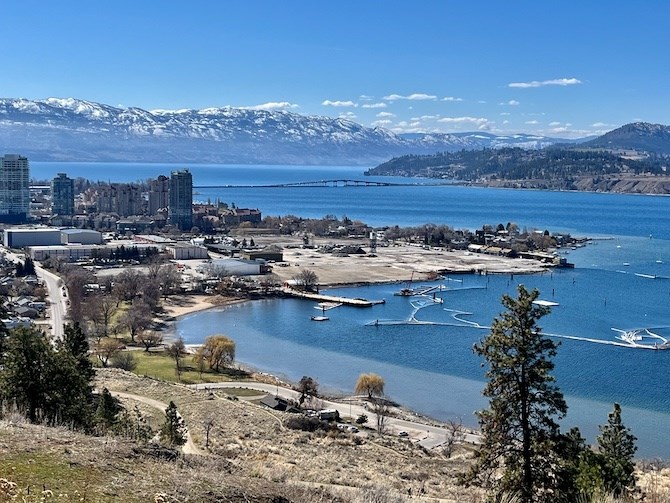Plan for development of Tolko Mill site on Kelowna lakeshore 'really underwhelming': city councillor
While many Kelowna city council members had high praise for concepts presented to them today for the redevelopment of the Tolko Mill site, some had serious reservations.
“When I met with the design team last year I said the public access needed to be the priority and when I look at these concepts I find them really underwhelming for what this site could be,” Coun. Loyal Wooldridge said today, Sept. 25.
“Like some of my other councillor colleagues, I don’t see enough green space,” Coun. Maxine DeHart added. “I don’t see enough park space. I don’t see enough hectares given to that. From what you’re giving us, I realize it’s high level, but when I see what we have downtown, I’m really concerned that there’s not enough.”
What was presented were three high level concepts that will go out for public input. There will be three open houses in conjunction with the related North End Plan, culminating with the “main event” at the Laurel Packing House on Oct. 26.
There will also be online opportunities for input until early November.
All three concepts show 3,500 housing units in 16 towers that will range from “under 30 storeys” towards downtown and One Water Street, descending to one to two storeys by the waterfront, Dan Walsh, the team leader for Holar Developments told council.
READ MORE: What you see is not necessarily what you’ll get with Kelowna’s Tolko plan
There will be three to four hectares of park space on the 17.8 ha property.
The site and Holar are owned by the Thorlakson family that has a four-generation connection to the Okanagan valley, Walsh said.
They see this as a legacy project and, even though some of the parcels may be sold off in the future, it’s expected to be mostly a multi-generational family project that will likely take 20 years to fully develop, Walsh said.
A key focus, he said, is that it be “Okanagan authentic.”
“It’s an architecture that is not necessarily Vancouver,” Walsh said when Coun. Gord Lovegrove asked what that term meant.
“I think it relates to the historical background to the Okanagan. Very much a fruit growing area. It’s very much lake orientated and it’s quite a different water use in the Okanagan versus the extreme west coast. It’s picking up all the elements making Kelowna quite different from its big sister down the road or going back east to Alberta.”
To contact a reporter for this story, email Rob Munro or call 250-808-0143 or email the editor. You can also submit photos, videos or news tips to the newsroom and be entered to win a monthly prize draw.
We welcome your comments and opinions on our stories but play nice. We won't censor or delete comments unless they contain off-topic statements or links, unnecessary vulgarity, false facts, spam or obviously fake profiles. If you have any concerns about what you see in comments, email the editor in the link above. SUBSCRIBE to our awesome newsletter here.




